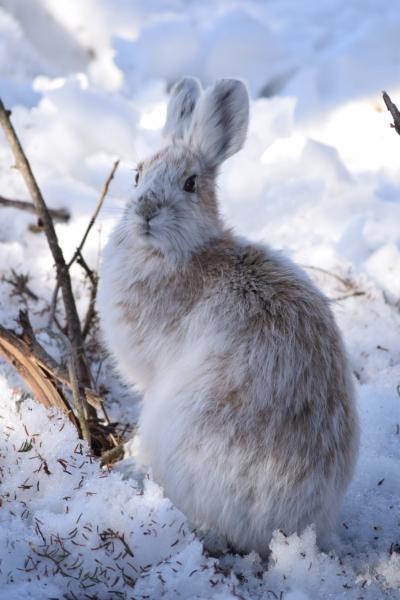How I Use a Calendar to Record Nature’s Cycles

Does this sound familiar? As summer wanes, you inspect all the trees for the first hint of fall. When a flock of birds fly by, you have binoculars at the ready to watch for fall migrants. When the autumn leaves drop, you wait excitedly for the first snowfall or the first glint of ice on a lake.
The act of observing seasonal variations and biological life cycles is related to the study of phenology.
In the spring of 2018, I moved to a remote Alaska village in the Arctic, population 12 people. I didn’t have to travel very far from the tour camp I worked in, but it took about five trips to move my belongings and the 13 sled dogs to their new kennel. With this move, my schedule was no longer: tour, sleep, breakfast, tour, dinner, sleep, tour, sleep, breakfast, and repeat. Now, my mornings began with the sudden, noisy howls from the kennel, and the chop chop of the axe to the dry logs for the woodstove. Hours filled with feeding schedules, training huskies, snowshoeing trails, collecting firewood, shoveling snow. So many hours outside. It was then, I first started to record changes in nature.
In May, the forest around my home began to crescendo with the warbles and trills of arriving migrant birds. Spring had finally arrived on May 10, after the ice on the river broke free and winter rushed downstream. Warmth returned to the Arctic as the sun rose a little higher each day. By May, there wasn’t enough darkness in the night to see stars!

Every year since, I have shifted what I look for in my surroundings. I’ve made it a habit to hit pause and spend some time outdoors to document what I see changing in nature. There’s a memory I think back to, when I remind myself why it’s important to spend time outdoors, to observe and record, and most especially, to share the experience with someone. My dad and I were backpacking through a canyon when I heard the unmistakable song of a canyon wren. I asked my dad, “Do you hear that? The tee tee tee tee tee churr!” Trying to give my best impression of the elusive wren. My dad looked confused. He shook his head. “There it goes again! Sounds like it’s falling down the canyon!” It took my dad a while to hear it, but I had been trained to listen. I had spent weeks in the field conducting bird surveys, observing and recording. Apart from these short backpacking trips once a year, my family’s birding experience is almost nonexistent, except for when I send bird videos and the occasional meme. “I hear something. I think so,” he responded. For a while, we listened to the canyon wren’s song cascading through the canyon. Later, at camp, I recorded my observations. It was fall.
Below are Three Ways to Use a Calendar:
1. Collect data for community science projects.
Record your observations and then turn your observations into data! Two observation databases I upload to are: iNaturalist and eBird, but there are many more specific-oriented databases. As the USA National Phenology Network states, “Researchers, resource managers, educators and others use your data for scientific discovery and decision-making. Your data are a big deal!”
2. Use as a tool for teaching students observational skills.
Bring the wonder of nature into the classroom! Observing and recording changes in nature is a fun way to engage students in place-based learning. And, the possibilities are endless! With your students’ help, record seasonal change, weather-related phenomena, bird observations, plants and flowers, pollinators, and more. It’s also a great way to introduce students to inquiry-based community science!
3. Use as a personal meditation on seasonal changes.
By documenting your observation in a calendar, you can experience your childhood sense of wonder again and relive the excitement of observing natural phenomena near you.
My Recommendation:
This upcoming year, I’m excited to use GLOBIO’s “Celebrate the Beauty of Biodiversity” 2021 Calendar to track aurora displays, length of sunlight, and of course, spring bird arrivals. The photographs and captioned stories in this calendar are gorgeous and inspiring. And, through this purchase, I feel I can help to support the environmental education work of GLOBIO and the North American Association for Environmental Education. You can get your own copy here: globio.org/NAAEEBiodiversity






Comments
Great post! Based on reading "The Forest Unseen", I developed an "Environmental Mandala" project for my high school students that is similar (but a little shorter) to your calendar. Students have to sit outside and do nothing but observe for 45 minutes. Then they research what they saw and compare changes from last time. They can present their observations any way they'd like and we get lots of creative presentations! I might need to incorporate calendars in the next version of this assignment (or another one!)